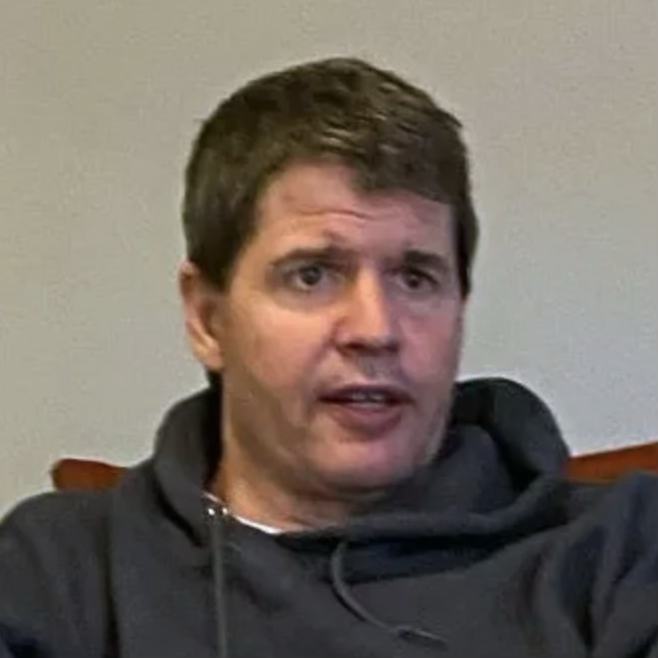Digital Credentials Are Booming, But Do Employers Actually Want Them?
“The tools exist, but the digital bridge between candidate and employer remains unfinished.”
Michael Trucano, Nonresident Fellow – Global Economy and Development, Center for Universal Education, Brookings Institution
Digital credentials and Learning and Employment Records (LERs) are booming. With over one million digital credentials now available from nearly 60,000 providers across the United States, the supply side of the equation is overflowing. Yet, a fundamental challenge remains: employer demand.
Despite the promise of these credentials to bridge longstanding skills gaps, offer more inclusive pathways to employment, and validate real-world abilities, many employers still default to traditional hiring proxies—formal degrees and prior work experience. For all their innovation, digital credentials often function as supplementary accolades rather than trusted tools for employment decisions. And in practice, they tend to benefit those who are already well-served by conventional systems, rather than those excluded from them.
Can digital credentials and LERs actually disrupt the dominance of the college degree in the labor market? Or will they continue to live in a parallel ecosystem, siloed from mainstream hiring processes?
To explore this tension, we spoke with Mike Trucano, a nonresident fellow at the Brookings Institution and longtime expert in digital education policy and workforce development. His perspective sheds light on the structural obstacles standing in the way of widespread credential adoption—and what must change for digital skills-based hiring to become the norm rather than the exception.
Meet the Expert: Michael Trucano, Nonresident Fellow – Global Economy and Development, Center for Universal Education at the Brookings Institution

Michael Trucano is a nonresident fellow with the Center for Universal Education at the Brookings Institution, where he explores issues related to effective and ethical uses of new technologies in education. Current areas of inquiry include the use of digital educational credentials, generative artificial intelligence in education, and, more broadly, emerging edtech policies, initiatives, and institutions after the pandemic.
Trucano was previously at the World Bank, where for 26 years he provided policy advice, research, and technical assistance to governments seeking to utilize new technologies in their education systems. In this role, he was adviser to, evaluator of, and/or working-level participant in large-scale educational technology initiatives in over 70 countries, including China, India, South Korea, Uruguay, the United States, and in many countries across Africa, the Middle East, and Eastern Europe. He most recently served for eight years as the World Bank’s global lead for technology and innovation in education and co-founded its edtech team, which coordinated assistance to governments around the world as they deployed remote learning programs in response to extended school closures during the Covid-19 pandemic.
Bridging the Gap Between Credentials and Recognition
Despite the growing supply of digital credentials, many employers remain unsure how to interpret them—or whether to value them at all. The issue isn’t one of access or availability, but rather of trust, familiarity, and relevance within hiring systems that remain anchored to traditional signals like degrees, job titles, and institutional reputation.
“Even though the digital credentials movement has been around for almost a generation, there’s still a lot of inertia,” says Mike Trucano, a nonresident fellow at the Brookings Institution and expert in digital education policy. “People tend to default to what they’ve always done. And what they’ve always done is rely on proxies they understand—degrees from recognizable institutions, or known job experience.”
Trucano points out that a major roadblock is basic awareness. Outside of the relatively small ecosystem of edtech companies, nonprofits, and workforce development advocates, many employers aren’t even sure what LERs are or how to interpret them. Worse still, when presented without context, these credentials can come off as opaque or even gimmicky. “There’s often this moment where people say, ‘Let’s define all these new terms first,’” he explains, “and that immediately creates a wall between the credentialing community and the hiring community.”
Another layer of resistance is perceptual. While digital credentials are pitched as tools of inclusion, they’re sometimes viewed—incorrectly—as lesser alternatives for people who couldn’t succeed in traditional systems. The phrase “second-class credentials for second-class students,” though dismissive and deeply flawed, captures a bias that still lingers in some corners of the labor market. This perception limits the ability of digital credentials to be judged on merit rather than assumed value.
Further complicating matters is the challenge of soft skills. While LERs have made headway in capturing hard skills—coding proficiency, for example—they often fall short when signaling interpersonal competencies like communication, leadership, or critical thinking. These are precisely the traits employers say they want, but struggle to evaluate, even with traditional resumes and interviews. “There’s a mismatch,” Trucano explains. “What’s credentialed doesn’t always match what’s being sought.”
This disconnect between intention and recognition remains the central dilemma. Until employers see digital credentials as both trustworthy and useful, they risk becoming yet another layer in the resume stack—visible, but overlooked.
When Systems Don’t Speak the Same Language
Even when employers are open to the idea of digital credentials, their hiring systems often aren’t. A major reason LERs and other digital certifications struggle to gain traction is that the infrastructure behind hiring, from recruiting software to internal HR databases, isn’t designed to accommodate them.
“Even when companies say they’re committed to skills-based hiring, their systems tell a different story,” says Trucano. Applicant Tracking Systems (ATS), which filter and rank candidates before a human ever sees a resume, are typically built around keywords tied to degrees, job titles, and years of experience. Most aren’t equipped to process or prioritize data from digital credentials or learning records, no matter how relevant they might be to a role.
This creates a technical mismatch. Job seekers may list digital badges or credentials earned from credible programs, but if the underlying system isn’t structured to recognize that information, it becomes invisible. In many cases, even companies that offer digital credentials, such as Google or IBM, don’t fully integrate them into their own hiring workflows. “One hand may not know what the other is doing,” Trucano notes.
The issue also extends to job platforms. Marketplaces like LinkedIn and Indeed serve as digital gatekeepers for job searches and professional identity. Yet many of these platforms do not meaningfully display or validate digital credentials within their core user experience. Some have experimented with showcasing certifications, but integration is still shallow. And as Trucano observes, platform companies may have their own incentives to build proprietary credential ecosystems, creating competition rather than cohesion.
For job seekers, this results in a frustrating loop: they’re told that skills matter more than degrees, encouraged to earn industry-aligned credentials, and yet find that those credentials don’t register in the systems that employers rely on to find and evaluate talent. The tools exist, but the digital bridge between candidate and employer remains unfinished.
From Pilot Projects to Policy Shifts
For digital credentials to evolve from promising innovation to a trusted standard, the conditions around them must change, starting with who uses them and how.
“What’s really needed is leadership from big-name employers,” says Trucano. “When Fortune 100 companies start actively recognizing and hiring based on digital credentials, it sends a signal that others can follow.” So far, many major firms have piloted skills-based hiring initiatives, but few have embedded LERs into the heart of their recruitment systems. It’s not enough to support credentialing in theory—those credentials must translate into hiring decisions in practice.
Standardization is another critical factor. Right now, the ecosystem is crowded with credential providers—some credible, others less so—and little consensus on how to measure rigor or relevance. Without shared frameworks, employers face the burden of deciphering an overwhelming range of offerings. Industry-led efforts like the Open Skills Network and government-backed frameworks aim to bring order, but adoption remains uneven. “There’s a need for a common language,” Trucano notes, “not just across industries, but within hiring systems themselves.”
Universities also have a role to play. While alternative providers have driven innovation, traditional higher education still carries unmatched signaling power. If elite institutions were to adopt digital credentials, not as side offerings but as part of their core transcript infrastructure, it could reshape perceptions across the labor market. According to Trucano, even for employers who don’t hire Ivy League graduates, signals from those institutions can influence broader recognition.
Policy is another lever. States and federal agencies have started integrating credential transparency into workforce programs, and funding streams like the Workforce Innovation and Opportunity Act (WIOA) could be structured to incentivize employers to recognize skills over degrees. Government procurement practices could also require or reward the use of skills-based hiring frameworks, pushing adoption in industries that contract with public agencies.
Yet Trucano cautions against assuming a one-size-fits-all path forward. Digital credentials have taken hold most successfully in tightly defined industries, such as IT or healthcare, where skill requirements are specific, measurable, and in high demand. Translating that success to sectors with fuzzier job definitions or heavier reliance on interpersonal skills will require not only policy changes, but a cultural shift in how employers think about talent.
What Comes Next for Digital Credentials?
The infrastructure is growing. Awareness is improving. And in specific sectors, digital credentials are starting to gain traction. But whether they will fundamentally reshape hiring practices—or simply exist alongside traditional systems—remains an open question.
“We’re going to see continued adoption,” says Trucano, “but it’s likely to remain fragmented—by industry, by geography, and by job type.” Fields with clearly defined technical skill requirements, like cybersecurity or radiology, are natural fits for credentials that map directly to job performance. But elsewhere, the road is less clear.
Trucano suggests that meaningful integration will only happen if several forces align: employers making deliberate changes to their hiring practices, platforms improving their infrastructure to recognize credentials, and prestigious institutions lending credibility to new formats. Without these shifts, LERs may remain a parallel credentialing system—valuable to some, but overlooked by many.
Still, there is room for optimism. As more workers seek flexible learning pathways and employers face pressure to find talent outside traditional pipelines, the incentives to modernize are growing. If the credentialing movement can bridge the gap between technical possibility and institutional trust, it may yet deliver on its promise to redefine what it means to be qualified.
